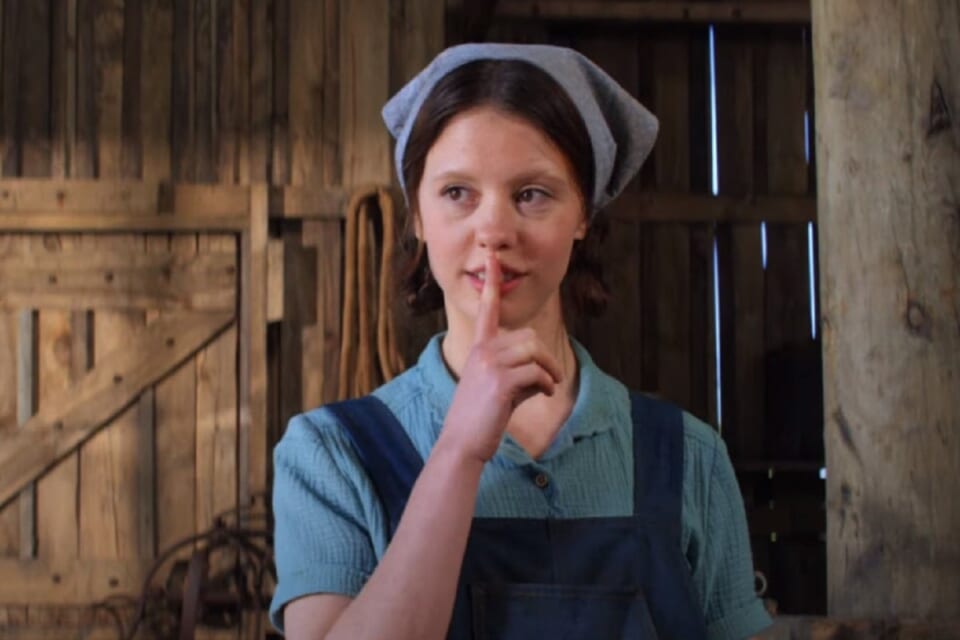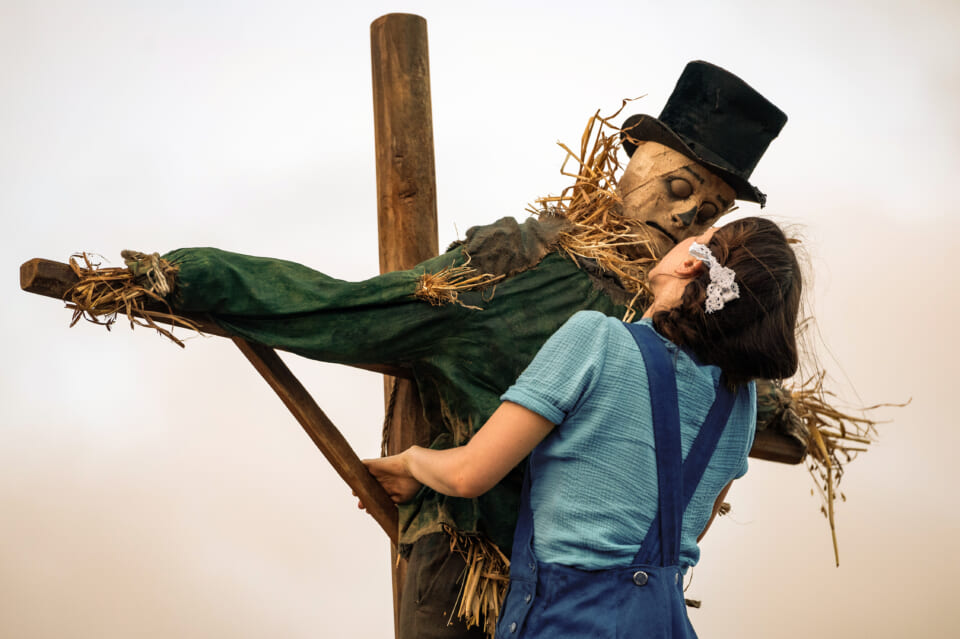‘Pearl’ Conjures History’s Cruel Repression of Women’s Rights

There are eerie connections between Ti West’s Pearl (2022), the Salem Witch Trials of 1692-1693, and our current political climate. Primarily, through the constraints on women’s choice, freedom, and self-expression. Pearl, played by Mia Goth, is entranced with lust and dancing—two desires that would get her burned at the stake if it was 1692 Salem, Massachusetts. She could have also been criminalized in 2022 Texas for having a miscarriage since it is often times labeled as an abortion in particular states.
West’s film highlights the limited freedom women experienced more than 100 years ago to the present day. The lack of rights surrounded by punishments persists as governments restrict women from controlling their own bodies. Pearl is a disturbed individual for killing others. But she is also a rebel against strict gender roles. Pearl rejects the expectations that society and her mother set for her. She refuses to be an obedient daughter, a Christian, a caretaker, and a civilized lady taking orders. Importantly, the film takes place in 1918 Texas during the Influenza Pandemic, commonly known as the Spanish Flu. This is also when the Women’s Suffrage Movement occurred. Women advocated for the right to vote and escape from submissive roles, such as wives, mothers, and caregivers. These two events mirror contemporary America.
Also Read: The Most Stylish Horror Films of 2022 [Final Girl Fashion]
When the United States Supreme Court overturned Roe V. Wade (1973) nearly 50 years after the right to abortion became legal, women became a target for doing “ungodly” things yet again. Mass hysteria erupted in Idaho, Tennessee, and Texas where it was already illegal to have abortions after six weeks of pregnancy. Texas in particular encouraged citizens to report women who seek abortions as well as the family, friends, and doctors who “aided and abetted” them. Those who reported the women of “(attempted) murder” would be compensated with $10,000. This led to the declaration of the Texas Witch Trials.

One thing that sticks out like a burning torch is the restraints Pearl endures from society and her mother. Ruth (Tandi Wright) tries to burn her daughter’s illusions and enforce the priority of the home and her paralyzed father. It is during the first few minutes of the movie that the so-called sinful and devious acts surface. The Encyclopedia Britannica suggests the Salem Witch Trials and executions of approximately 60,000 people resulted from “a combination of church politics, family feuds, and hysterical children, all of which unfolded in a vacuum of political authority.”
Also Read: The 10 Best Horror Kills of 2022
During the late 1600s, Puritans condemned forbidden pleasures they associated with witchcraft including, lurid sex, promiscuity, dancing, beliefs contrary to the norm, and even hallucinations. The 1953 play The Crucible by Arthur Miller suggests that dancing women lacked self-control, but on the contrary, it represented self-empowerment, power, and dominance of their own bodies. The narrator suspects the lack of civil liberties and isolation from civilization is the cause for the events taking place. Events like the Spanish Flu gave fruition to at-home confinement while citizens did not trust others especially if they had contact with the outside.
The Spanish Flu situation in Pearl connects us to the COVID-19 global pandemic that shut us away from outdoor activities yet left room for us to battle with our minds and lack of human interaction. It was enough to make many of us desperate and insane. So when Pearl sneaks to the nearest movie theater through nearly-empty streets and masked strangers, it also functions as a reflection of the parallel historical moment we’re currently living in.
Also Read: Observations On Observations in ‘Nope’
Women have been forced to be the eye-rolling alliteration of pretty, prim, and proper. These are all qualities Pearl confesses to lacking in her closing monologue. She enjoys the scorching sensation and control over her body and her dreams of being a dancer similar to the eloquently choreographed women in the films she watches behind her mother’s back. Her sexual desires are performed on a scarecrow, and with the movie projectionist (David Corenswet).

West’s psychological slasher demonstrates Pearl’s twisted behavior through her raging impatience with her paralyzed father, the neglect and sexual dissatisfaction from her husband, her experience at the mundane farm, and her alienation from the world. These are situations that escalate to the killings throughout the movie. Pearl confesses her feelings of alienation, insecurity, and the satisfaction of projecting her anger through killing others, and her miscarriage. She expresses the relief of not having a child because she did not feel capable of taking care of another. All these ingredients caused the pot to boil and topple over with the heated pressure from the world, the government, and her own parents.
Also Read: ‘What Josiah Saw’ and the Tragic Nature of Shared Trauma
Pearl mimics the cruelty women have encountered for centuries from the lack of freedom and sexual expression, stereotyped roles, and their continued denial of rights, West’s movie may appear as a fictional technicolor movie with slasher undertones. But in reality, it’s a projection of a woman’s life, her dreams, and her freedom murdered by reality.
Categorized:Editorials News

